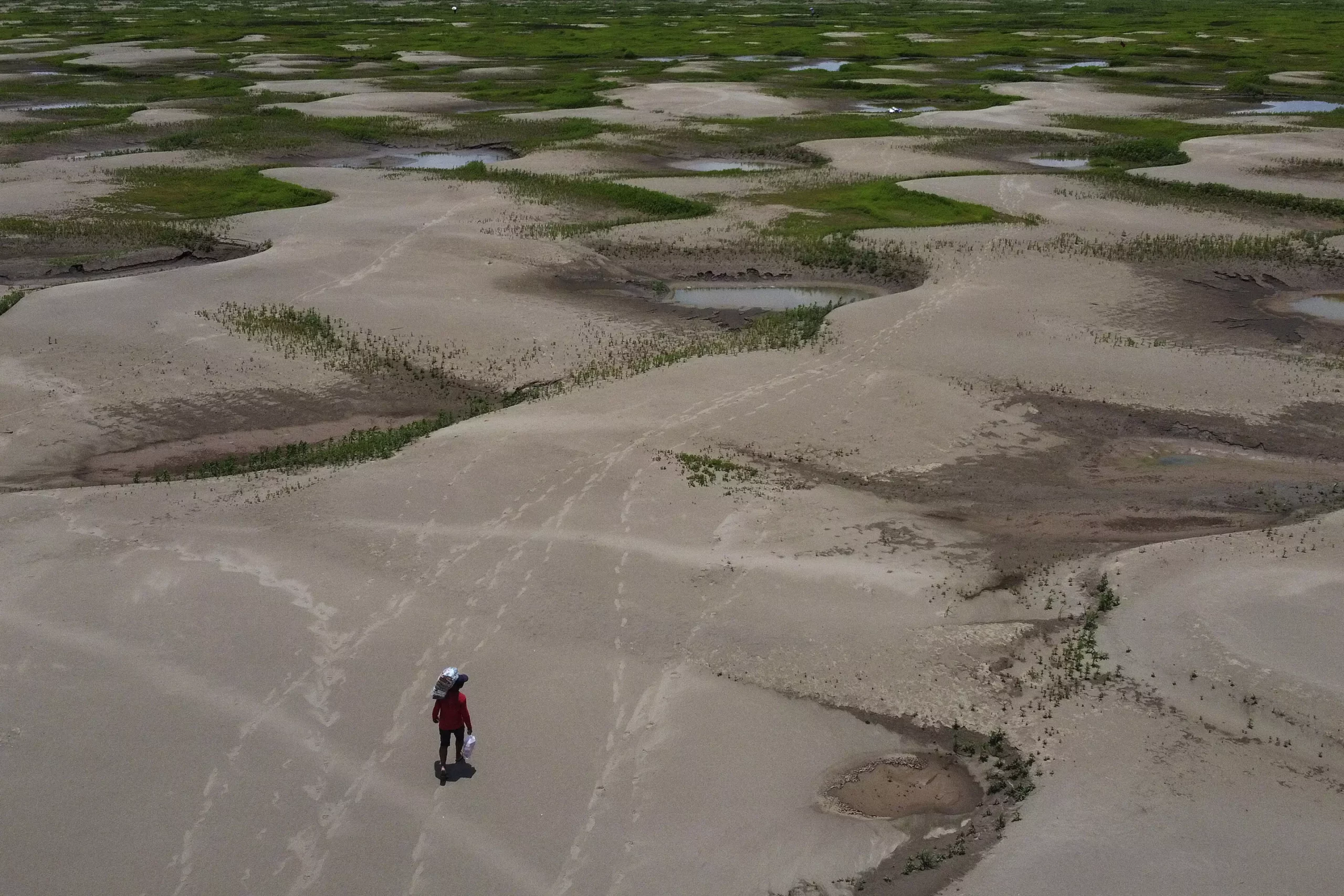The severe drought in the Amazon last year, which had detrimental effects on the region’s rivers, wildlife, and communities, was primarily driven by human-induced global warming, according to a recent study. The El Niño phenomenon and climate change both played a role in reducing rainfall, but the rise in global temperatures was identified as the main culprit. This article delves into the study’s findings and highlights the significance of addressing global warming to prevent future devastating droughts in the Amazon.
The drought in the Amazon, home to the world’s largest rainforest and a vital carbon dioxide sink, occurred during the hottest year on record. Higher temperatures resulted in a combination of reduced rainfall and increased evaporation, ultimately exacerbating the severity of the drought. The consequences were dire: rivers reached record low levels, forcing the delivery of food and drinking water to hundreds of river communities. Additionally, dozens of endangered dolphins perished, and local agriculture and fishing industries suffered. The region’s largest city, Manaus, experienced months of choking smoke from widespread wildfires.
While both climate change and El Niño contributed equally to the reduction in rainfall, it was human-induced global warming that amplified the drought’s impact. The study employed computer simulations to analyze how weather events would have unfolded in a hypothetical, cooler world without global warming. By comparing these simulations with actual data, the researchers were able to determine the extent to which global warming influenced the severity of the drought. The findings indicate that if global warming continues, the combination of low rainfall and high temperatures will become even more common.
The drought in the Amazon serves as a stark reminder of the rainforest’s crucial role in mitigating climate change. By absorbing carbon dioxide, the Amazon acts as a significant land-based carbon sink. However, if human-induced emissions and deforestation push the rainforest beyond a tipping point, it will release substantial amounts of carbon dioxide into the atmosphere, further complicating global efforts to combat climate change. Protecting the Amazon is essential in the fight against climate change, as it provides a crucial ecosystem service by sequestering carbon and preserving biodiversity.
While the study provides important insights into the causes of the Amazon drought, some experts caution against oversimplifying the issue. Luiz Candido, a meteorologist from Brazil’s National Institute for Amazon Research, acknowledges that climate variations in the region have become increasingly extreme. However, he highlights the complexity of interactions among the oceans, the atmosphere, and the rainforest, emphasizing that it is challenging to isolate the impacts of natural climate variability from those attributed to human-induced global warming. Candido also suggests that the study may have overestimated plant evaporation, as many Amazonian plants have extensive root systems that enable them to retain moisture more effectively.
The groundbreaking study concludes that human-induced global warming was the primary driver of the devastating Amazon drought last year. While El Niño and climate change played contributing roles, the rise in global temperatures exacerbated the severity of the drought by decreasing rainfall and increasing evaporation. The implications of this research point to the urgent need to address global warming to prevent the recurrence of such destructive droughts in the future. Protecting the Amazon is not only crucial for preserving biodiversity but also for mitigating the impacts of climate change by maintaining a vital carbon sink. Continued efforts to reduce greenhouse gas emissions and combat deforestation are vital in safeguarding the Amazon rainforest and preserving its invaluable role in maintaining a stable climate for the entire planet.



Leave a Reply